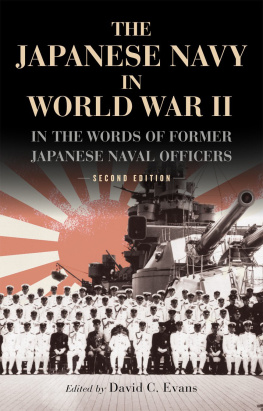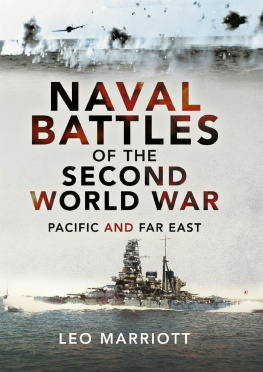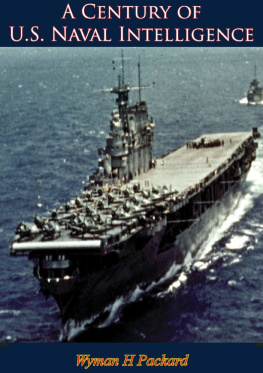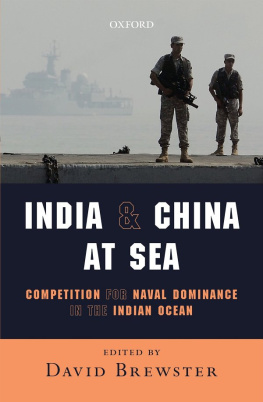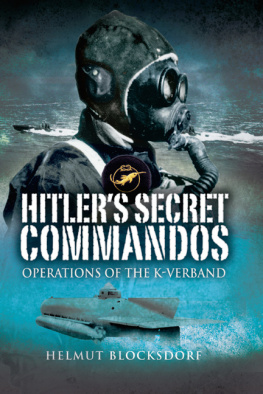
To the people of Bangladesh, who fought and won a heroic battle against extinction. The inheritors of Sonar Bangla, the land of Bangabandhu Sheikh Mujibur Rahmans dreams.
In Memoriam
Captain M.N.R. Samant, Maha Vir Chakra (19302019)
Sailor, submariner, covert warrior, war hero
CONTENTS

M uch is known about the excesses of the Pakistan Army in 1971 in what was then the eastern half of the country. This was a period when an estimated three million Bangladeshis were killed during the Pakistan Armys onslaught on its own citizens in East Pakistan. The Bangladesh military conflict between India and Pakistan in 1971 was the inevitable consequence of this genocide and the pressure of tending to the over eight million refugees who had fled to India. The war finally resulted in the formal surrender by the Pakistan Army on 16 December 1971, and close to 93,000 Pakistani nationals surrendering as Prisoners of War to a joint command of the Indian Army and the Mukti Bahini Bangladesh freedom fighters.
While much has been written about the land and air battles that led to the liberation of Bangladesh, there has been an impression that, except for operations by carrier-based aircraft in the Bay of Bengal and an attack on Karachi during the conflict, the Indian Navy had little or no role in the developments leading to the liberation of Bangladesh. More than four decades after Bangladesh was liberated, this impression has finally been corrected, thanks to this book written by Captain M.N.R Samant, who was awarded the Maha Vir Chakra for exceptional bravery in the conduct of covert commando operations in Bangladesh. These operations were undertaken well before the actual declaration of war in December 1971. The book is co-authored by Sandeep Unnithan, who has been one of Indias foremost writers on issues related to defence and national security. It also sheds light on how Prime Minister Indira Gandhi personally approved and regularly monitored the covert naval operations in Bangladesh, which were undertaken under the supervision of the then naval chief, Admiral S.M. Nanda and the director of naval intelligence, Captain (later Vice Admiral) M.K. Roy.
The case for a naval role in the developments within Bangladesh emerged on humanitarian grounds. But what gave the idea impetus was a virtual rebellion within the Pakistan Navy just after the Bangladesh uprising commenced. Eight Bengali naval personnel deployed in a recently acquired French built submarine, the PNS Mangro , decided to desert the Pakistan Navy and join the freedom struggle after hearing horrific details of the Pakistan Armys brutal killings in East Pakistan. The submariners found their way to the Indian Embassy in Madrid, seeking Indias help in returning to their homeland. These sailors formed the base upon which the Indian Navy built its whole offensive, and played a key role in contacting and providing local support for the covert Indian operations that were aimed at destroying logistical facilities across the coastal areas of Bangladesh, weeks before actual military operations by India began.
The book spells out how covert operations on foreign soil are conducted and the constant danger that those involved in these operations face to their lives, every moment they are operating on foreign soil. That, for me, is what makes this book such a gripping read. I was also happy to see that it is able to place the whole situation in an international setting by defining the contours of the difficult diplomatic situation that Indias leadership faced in dealing with the emergence of a virtual USChina alliance which had been built with Pakistan acting as the intermediary. US President Richard Nixons aversion for India and its leadership, and the USs keenness to turn a blind eye to the brutal suppression of the Bangladeshis despite the superpowers avowed love for democracy as well as Sheikh Mujibur Rehmans rightful claim to power failed to make matters easier for India.
The entire strategic scenario across Indias eastern borders has changed after the epochal conflict of 1971. Bangladesh, which was then virtually written off as a potential economic basket case, forever leaning on international aid for its existence, has proved the sceptics wrong. Largely self- sufficient in meeting its food needs, the country has now emerged as a leading player in exports worldwide of textiles and textile products. While its military did play a role in the initial years after independence, Bangladesh is today a vibrant democracy. Even long-standing differences with India over its land and maritime borders have been amicably resolved.
The reality today is that it is not Bangladesh, but Pakistan that has emerged as an international basket case, heavily dependent on foreign aid to make both ends meet. Already one of the worlds fastest-growing major economies, Bangladesh is poised to overtake Pakistans GDP in the next few years.
Captain Samant was given a heros welcome whenever he visited Bangladesh and met friends and admirers who looked back on what happened in 1971 with justifiable pride. He lived a full, heroic life, and it pains me immensely that he could not be here to witness the adulation this wonderful book would receive. However, it gives me satisfaction that he was able to recount to readers the real story of the covert naval operation that birthed Bangladesh, and to finally give us a glimpse into the lives of the unknown heroes who made the bigger campaign possible.
While this book is a celebration of the Indian heroes, it would be remiss of us if we forgot the role of the eight brave Bangladeshi submariners M. Rahmatulla, S.M. Hussain, Aminullah Sheikh, A.W. Chowdhury, M.B. Alam, M.A. Rehman, A.R. Mian and M. Ahasanullah who were prepared to sacrifice their lives for the cause of freedom and dignity of their fellow countrymen.
G. Parthasarathy
New Delhi
May 2019

INDIAN NAVY
| OFFICER | DESIGNATION |
| Admiral Sardarilal Mathradas Charles Nanda | Chief of the Naval Staff |
| Capt Mihir Kumar Micky Roy | Director Naval Intelligence |
| Commander M.N.R. Sammy Samant | Staff Officer (Naval Operations X) |
| Lt Cdr George Martis | Officer in Charge, C2P, Plassey (JuneNov 1971) |
| Lt Vijai Prakash Kapil | Officer in charge, C2P (April June), Second-in-Command (June Dec 1971) |
| Lt Samir Das | Instructor, Training Coordinator C2P Plassey |
| Lt Cdr Ashok Aku Roy | Officer in Charge Naval Detachment, Delta Sector (July Oct 1971) |
| Lt Cdr Jayanto Kumar Roy Choudhury | Commanding Officer MV Palash , Squadron Commander C2H |
| Lt Suvesh Kumar Mitter | Commanding Officer MV Padma |
| Lt Cdr Vishnu Kumar Raizada | Chief Squadron Technical Officer, C2H (Electrical) |
| Lt Cdr C.S. Menon | Staff Officer to Cdr Samant (May Oct 1971) |
| Lt Cdr G.D. Mukherjee | Staff Officer to Cdr Samant (Oct Dec 1971) |
| Commodore R.P. Squeaky Khanna | Naval Officer in Charge (NOIC) Calcutta |
| Lt J.V. Natu | Squadron Engineer Officer C2H |
| Sub Lt A.K. Bandopadhyay | Junior staff officer to Cdr Samant (November-December 1971) |
Next page




